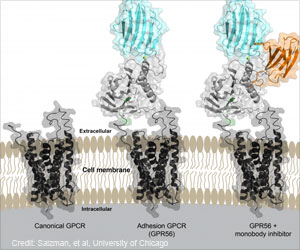Scientists describe three dimensional structure of proteins for the treatment of diseases like melanoma, leukemia which are mediated through proteins.

TOP INSIGHT
Discovery of the three dimensional structure of protein molecules helps to target new treatment options for diseases mediated through proteins.
Scientists have been discovering innumerable roles played by the G protein coupled receptors over the years. But however, the structural description for knowing the various functions of extracellular regions were found to be missing. And also these regions could also be targeted for developing future pharmaceutical drugs.
Salzman study focussed on the extracellular region of GPCR which is also known as GPR56 or ADGRG1 which was found to play a major role in the muscle cell , cancer and neurodevelopment. GPR56 plays a role in developing the cortex cells and oligodendrocytes.
The project was carried out by Salzman along with Demet Arac, PhD, and Shohei Koide, PhD to study about targeting the extracellular region of GPCR for pharmaceutical development.
The study focused on a unique protein domain called PLL, and when deleted would increase cell signaling.
Salzman further added that, “Our discovery that aG-Protein Coupled Receptor extracellular regions regulate function in a multifaceted and complex manner provides important guidelines for developing therapeutics for diverse diseases in which aGPCRs play important roles".
Source-Medindia
 MEDINDIA
MEDINDIA



 Email
Email






